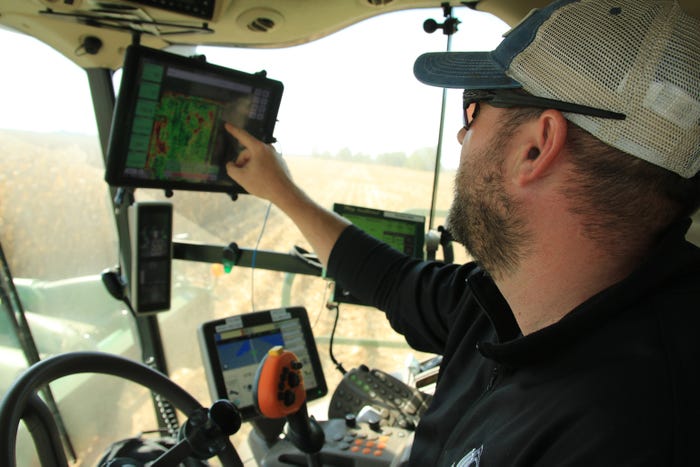
Cultivating Master Farmers participant Jason Watson has farmed for 15 years, and in that time, he’s also been a detasseler, insurance salesman, soil tester and seed producer.
The off-farm income sources allowed Jason to come back to his family’s farm straight out of college in 2005, around the same time as his cousin Adam Watson, a 2008 Cultivating Master Farmers alum. They work alongside their fathers on the four-family farm in Villa Grove, Ill.
“We’re now at the point in time in our operation where my dad and my uncle are beginning to phase out,” Jason says. “We’re continuing to grow our business. And when I talk about growing our business, it’s not always in the size of the operation, but in the profitability of the operation.”
At first, the cousins ran a soil diagnostic business when they came back to the farm. “It was a way for us to be on the farm, and a way for us to make some money,” Jason says.
The soil business has since closed as the cousins have focused on growing the profitability of other ventures, such as grain storage and growing seed for Channel. They’ve doubled seed sales since they came back to the farm.
“My grandpa and father always told me, it does no good farming new ground until you can farm the ground that you have as good as you can,” Jason says.
Jason and his wife, Erin Grace Watson, are both participating in the Cultivating Master Farmers program this year, engaging and learning from other young farmers as well as seasoned Master Farmers in the two-year mentorship program. Erin’s brother, Stephen Grace, is also a member of the program.
“I enjoy the program because even though I grew up as a farmer’s daughter and watched my mom be an amazing farmer’s wife, I am learning so much about what it means to be a farmer’s wife in today’s farming culture from the other ladies,” Erin says. “I am also lucky to go through the program with my brother.”
Cultivating Master Farmers is sponsored by Prairie Farmer, Growmark, Illinois Farm Bureau, Monsanto, Compeer Financial and Farm Credit of Illinois.
Erin, who works as the local director for YoungLives, and Jason married in August 2017. They just had their first child, a boy named Greyson Roger, in the midst of harvest. The two used to commute to the farm from Urbana, where Erin grew up, but now they’ve moved into a newly renovated home on the farm.
“This is our first harvest season at the house,” Erin says. “I’ve noticed a great difference in being closer during long hours and early mornings, and that’s been really helpful.”
“We put in a lot of hours being farmers, but just being able to swing by the house maybe as the bus is dropping the kids off, coming home for lunch, things like that — I really am looking forward to the family lifestyle created by living close to the farm,” Jason says.
Success through experimentation
Jason takes his grandfather’s advice seriously: Farm the ground you have as well as you can. For Jason, that means putting new technology to work to improve efficiency and profitability. The iPads in his combine cab today are a long way from the days when his job involved counting rows for the combine.
“We really use these iPads like crazy,” he says. “We have the ability to track and record things in ways that we’ve never had before. And we just try to do everything we can to make sense of that information.”
 EFFICIENCY: With an iPad, Jason Watson looks at data such as soil type and hybrid placement, using the information to increase efficiency and profitability.
EFFICIENCY: With an iPad, Jason Watson looks at data such as soil type and hybrid placement, using the information to increase efficiency and profitability.

He plants trials of different varieties regularly, and in addition to using his combine to gather data to gauge their performance, he’s using drones and paid airplane flights with more expensive cameras.
“You’re never going to learn what works on your farm until you try it and have a good way of monitoring it,” Jason says. “We really like to understand what’s happening on every acre, and we’re leading that into variable-rate planting and possibly variable-rating our nitrogen fertilizer.”
He adds that this year, he’s growing soybeans at a lower density per field than he ever has.
“When I first started farming, we were probably planting over 160,000 plants per acre on soybeans. We’re under a 140,000 now, even planting some fields at a 120,000. We’re getting higher yields and saving a bit on seed cost,” he says.
About the Author(s)
You May Also Like




